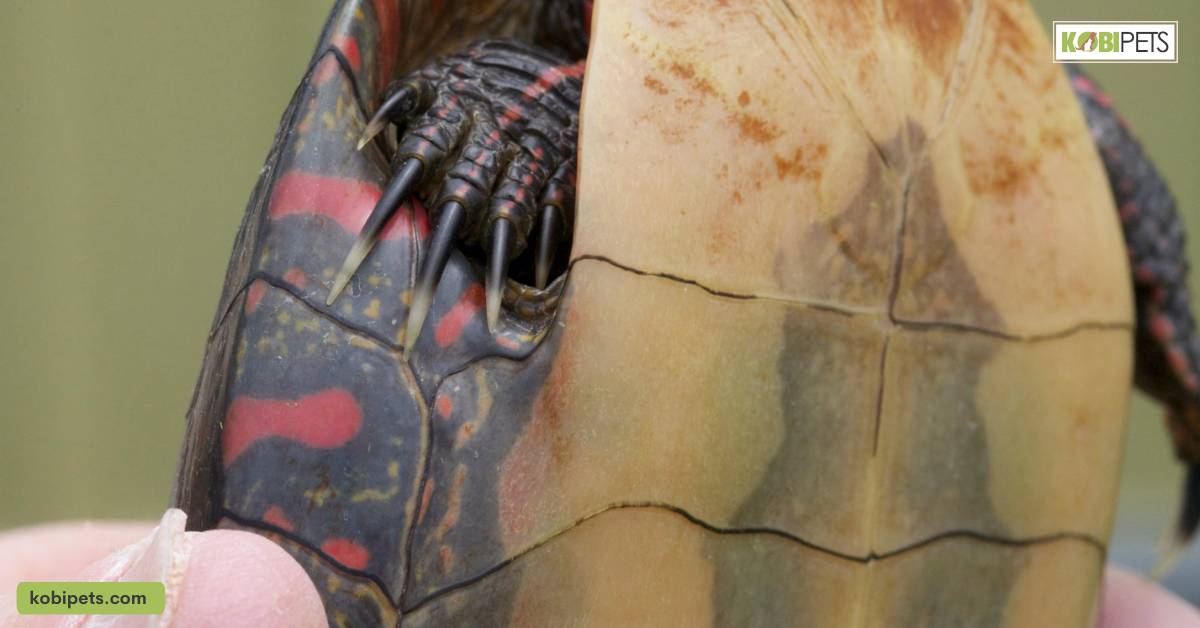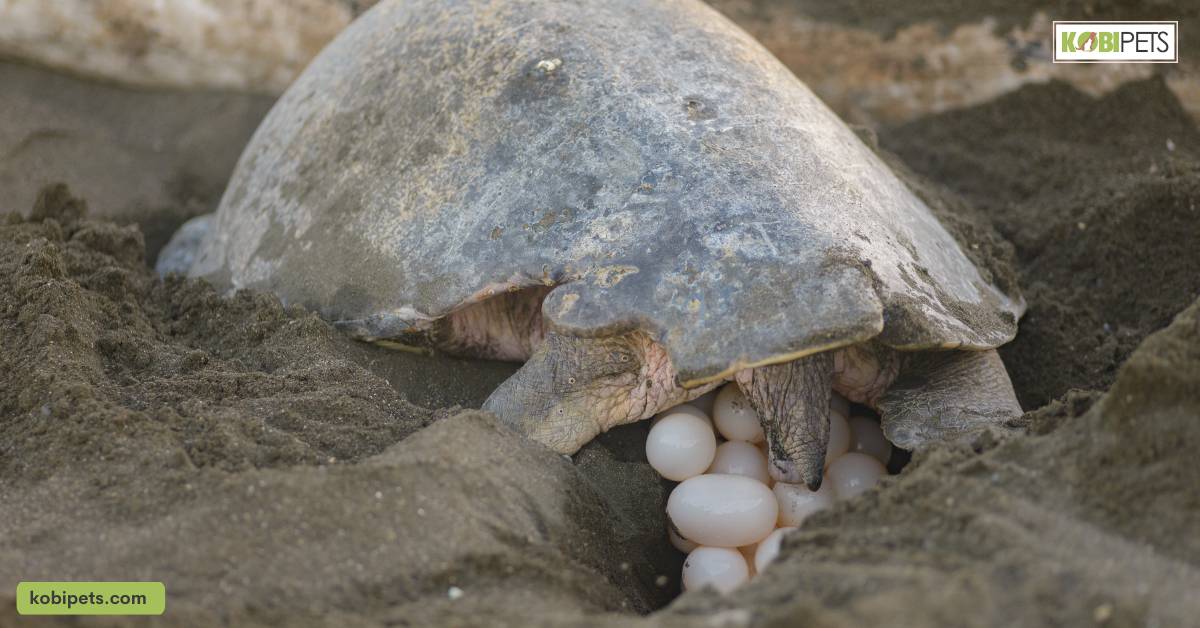
Learning how to accurately identify the gender of a turtle can be a tricky process, depending on the species. However, with the right information and guidance, it is possible to confidently determine the gender of a turtle in a humane way.
Physical characteristics such as shell shape, tail length, and claw length can be used to differentiate between male and female turtles in some species. Additionally, behavioral characteristics such as nesting habits and mating rituals can also provide clues as to a turtle’s gender. Finally, genetics and DNA analysis can be used to definitively determine a turtle’s gender, but these methods require specialized equipment and knowledge.
This article will cover the basics for telling males from females in domestic pet turtles and provide useful tips to tell them apart. With this newfound knowledge, you can understand your pet turtle better and properly care for them!
Physical Characteristics
Knowing the gender of any species is an important part of their ongoing care, and turtles are no exception. Being able to accurately identify whether your pet turtle is a female or a male allows you to best meet their nutritional and behavioral needs as they grow and mature.
We will provide a breakdown of the physical characteristics that can be used to determine the gender of your turtle so that you can properly care for it throughout its life.
Shell Shape
Shell Shape is one of the physical characteristics used to determine the gender of a turtle. In general, male turtles have a flatter, wider, and more angular shell compared to female turtles, which tend to have rounder and more curved shells.
However, this distinction is not always clear and may vary depending on the species of turtle.
For example, in species like box turtles, male shells are typically flatter and more angular on the bottom, while female shells tend to be more rounded. In species like slider turtles, male shells tend to have a concave bottom, while female shells are more rounded.
It’s important to note that not all species of turtles have distinct shell shapes that can be used to determine their gender.
In some species, both male and female shells have similar shapes and curves, making it difficult to determine their gender by just looking at their shells.

Tail Length
Tail length is one of the most reliable ways to tell the gender of a turtle. Male turtles typically have longer and thicker tails than females, which can extend more than 10 cm (4 inches) past the edge of the carapace.
Additionally, male turtles have a visible anus past the outer edge of their carapace or shell. On the other hand, female turtles usually have shorter and thinner tails that don’t extend far beyond their carapace.
Another way to tell if a turtle is male or female is by looking at the location of the vent or cloacal opening. In most species, males will have this opening further away from their tails compared to females.
It’s important to note that some species may not show any physical differences between genders, so it’s best to consult with an expert before making any assumptions about your turtle’s gender.

Claw Length
Turtles are reptiles with a hard shell that covers their body. While it can be difficult to tell the gender of a turtle, one way to do so is by looking at the size of its claws. Male turtles typically have longer and thicker claws than female turtles.
To measure the claw length of a turtle, you will need to gently pick up the turtle and turn it over so that its underside is facing up. Then, use a ruler or measuring tape to measure from the tip of the claw to where it meets the leg.
It’s important not to pull on the claw too hard as this could cause pain or injury to your turtle.

Behavioral Characteristics
In some cases, you may find yourself uncertain of the gender of a turtle. Due to turtles’ distinct anatomical and behavioral characteristics, it is possible to identify gender accurately by taking note of certain observations.
It is important that you review the specific behavioral characteristics of your particular species so that can identify the turtle correctly.
This section will help guide you through making these observations for certain turtles in order to make an accurate assessment of their gender.

Nesting Habits
Nesting habits are another behavioral characteristic that can be used to determine the gender of a turtle. Turtles are known for their specific nesting behaviors, which differ between male and female turtles.
Female turtles are responsible for laying eggs, which they do in specific nesting sites. These sites are usually chosen based on the availability of sand or soil, protection from predators, and access to sunlight.
They will typically dig a hole in the ground, lay their eggs inside, and cover them up with soil or sand.
On the other hand, male turtles do not participate in nesting or egg-laying behaviors. They are not typically involved in the process of finding or creating a nesting site, and they do not play a role in caring for the eggs or hatchlings.
It’s important to note that not all species of turtles have distinct nesting habits that can be used to determine their gender.
In some species, both male and female turtles may engage in similar or identical nesting behaviors, making it difficult to determine their gender based on this characteristic alone.
Mating Rituals
Mating rituals are another behavioral characteristic that can be used to determine the gender of a turtle.
In many species of turtles, male and female turtles engage in distinctive mating behaviors that can be used to identify their gender.
Male turtles are typically more aggressive during mating season and may engage in displays of courtship behavior to attract a female. This can include exhibiting brighter colors, making vocalizations, or performing certain physical movements.
In some species, male turtles may also engage in physical combat with other males to establish dominance and gain access to a female.
Female turtles, on the other hand, typically do not engage in courtship behavior and are not as active during mating season. They may be more passive and responsive to the advances of a male, but they do not typically initiate or participate in mating behaviors.
It’s important to note that not all species of turtles have distinct mating rituals that can be used to determine their gender.
In some species, both male and female turtles may engage in similar or identical mating behaviors, making it difficult to determine their gender based on this characteristic alone.

Genetics and Testing
Genetics plays an important role in determining the gender of a turtle. With the development of genetic testing, it is now easier than ever to accurately identify a turtle’s sex through laboratory analysis.
This method is considered to be the most reliable, although other methods such as external features and transcription analysis can also help in gender identification with success rates that vary depending upon the species of the turtle being studied.
Blood Sampling
For the most accurate result, it is best to have a qualified veterinarian perform a blood sampling test. This procedure involves collecting a sample of your turtle’s blood and sending it off to a laboratory for analysis.
The lab will then be able to determine the turtle’s gender with nearly 100% accuracy.

DNA Analysis
DNA analysis is another common method for sexing a turtle. This involves collecting a sample of the turtle’s cells, typically from a toenail or shed skin, and then analyzing the DNA for gender-defining markers.
This method can provide an accurate result with less than a 1% error rate, so it is worth considering if you are looking for a reliable way to determine the sex of your turtle.

In conclusion
In conclusion, while telling the gender of a turtle can be as simple as looking at its eyes, you may have to manually sex your pet depending on the species.
Remember that each species may have unique guidelines and traits when it comes to determining gender.
However, with a few simple observations and some research, you will be able to successfully tell the gender of your turtle. If in doubt, bring your turtle to the local pet store or veterinarian for confirmation.






